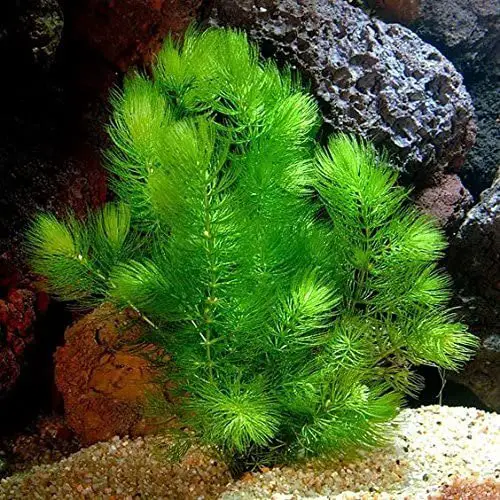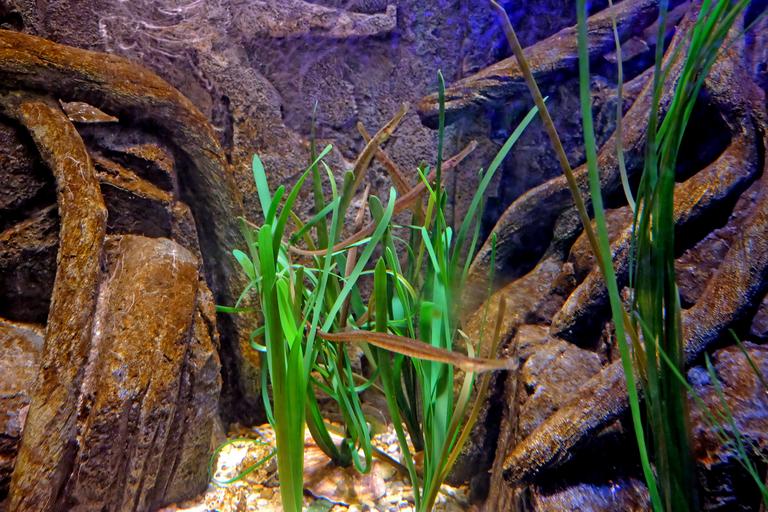Every good fish keeper knows the value of adding plantation to an aquarium.
It improves the oxygenation, filters out harmful toxins, and gives the inhabitants somewhere safe to hide― not to mention that it makes an aquarium setting look great and adds a nice splash of color!
Hornwort is one of the easiest plants to care for, but if you’re having a little too much success growing it, then you might be wondering how to trim hornwort.
Hornwort is a very fast-growing plant that can be planted or float and can take over your aquarium if you’re not careful. To trim hornwort, simply reach into the plant and pluck stems off at the point you want to trim them.
With beautiful feathery arms and a vibrant green glow, a lot of new aquarists don’t realize how quickly some species of plants can reproduce and overrun your tank. The rest of this article will go into depth on how to manage your hornwort and trim it down to an idea size.
Will Hornwort Grow after Cutting?
Hornwort can be found in many lakes and rivers and is capable of adapting to a wide range of water conditions and temperatures. As such, they are particularly hardy plants and can offer a nice visual for your tank; however, if your hornwort gets out of control, then you’ll want to trim it back.
While a heavily planted tank is great for the tank cycle and keeping the parameters within check, too many plants can starve a tank of nutrients and detrimentally affect the water conditions.
Because hornwort can outcompete many other plants, you’d do well to add some fertilizer to your tank every once in a while to make sure your other plants are getting the nutrients they need.
As such, you’ll definitely want to cut back on the amount of hornwort you have before it fully takes over your tank. To do this, simply break off the stem at the point you want to trim it back.
Feel free to snip any horizontal stems branching out if they’re interfering with the aesthetic of your tank.
Letting your hornwort grow out of control can cause the gas exchange to be knocked out of balance, and thick greenery can produce overarching leaves which prevent light from reaching the bottom of the tank.
Don’t worry― hornwort is resilient and will grow back quickly, which is why you have to stay on top of your hornwort trims.
It’s important to note that snails are not good at cutting back on the amount of hornwort you have. Snails won’t eat the healthy parts of the plants, so if you see your snail munching on hornwort, they’re most likely cleaning out some bad leaves for you.
In addition, hornwort is unappealing to most fish, so you are the primary gardener when it comes to keeping your hornwort in check.
How Do You Manage Hornwort?
The great thing about hornwort as a beginner plant is that it can survive almost any tank condition― anything you throw at it, really. It can manage in temperatures between 50-85 ⁰F, making it idea in tropical aquariums, cold aquariums, and outdoor ponds.
Hornwort is adaptable to both low and high light environments, meaning that it will likely propagate quickly, whether you want it to or not. As such, hornwort makes a great ‘back wall’ for a tank, so long as you make sure it doesn’t fully block the light from getting through.
Having a heavily planted tank is ideal if you’re trying to raise live bearers like mollies or guppies. The tiny fry are most susceptible to being eaten by every other fish in the tank (including their parents) in the first few weeks of their life.
A dense mass of hornwort can provide the perfect hiding place for these fry and increases the odds that they will make it to adulthood.
Because it grows best as a floating plant, if you try to plant it in substrate, the buried end will eventually rot away.
Why Is My Hornwort So Thin?
If you notice that your hornwort is looking thin or is shedding its needles a lot, then it’s likely that you have unfavorable water conditions that are causing the problem.
Any big shift in water parameters or tank conditions can cause the hornwort to dial back on the growth and lose its healthy green glow. Oftentimes, hornwort simply isn’t used to your tank if you’re introducing it for the first time.
The shift in parameters will take some time for the hornwort to adapt to.
How Do You Keep Hornwort Floating?
By their nature, hornwort will float. In fact, it’s best to let them float if you really want them to grow. On the surface, they have better access to light and carbon dioxide―just remember that they can easily outcompete other plants lower in the tank if the hornwort is too dense.
Make sure that your tank doesn’t have too much of a current; otherwise, you risk any needles shed by the hornwort being sucked up into the filter.
During your water changes, make sure you siphon up any leftover needle debris from the hornwort to prevent a buildup of excess nutrients.
Final Thoughts
Hornwort is a great beginner plant and is pretty easy to get started with―all you need are some trimmings, and you can probably get hornwort to grow. No green thumb required for this one.
Hornwort offers a great backdrop of green for your tank, but you should stay on top of trimming it every once in a while to prevent it from having a monopoly on all the nutrients in your tank.
To trim it, you simply need to reach in and break off the stem at the point you want to trim it back to. Discard the broken-off bit (it will grow back). Rest assured, hornwort are hardy plants and can grow back after being trimmed.
Once you find the right balance, you can enjoy the beauty of hornwort without having a green mess of a jungle.



